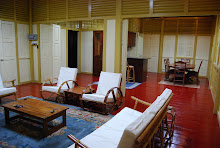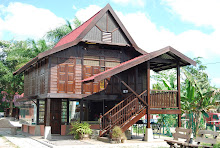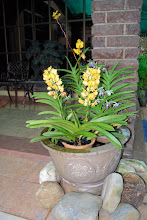SCHOOLS are not as they were before. It’s understandable with the changing time and the priority as defined by educationists and the administrators. Still some commonality stands as they were. There are teachers as well as there are pupils or students. There are classrooms and school buildings too, though they differ now in terms of size and facilities.
For those when schoolings started half a century or more ago, present trends are a far cry from the practices then. Only the ‘lucky’ one would get places as the number of good secondary schools in each state in Malaya would not exceed the number of fingers on your right or left hand. To qualify for a certificate that was a license to higher education or the work place you had to sit for an oversea conducted examination. It was known as the Cambridge Oversea School Certificate with awards in three grades besides distinguishing in the particular subjects and the necessary passes or credits rating in certain subjects.
The students were caught up with subjects ranging from Malay, English, English Literature, General Science, Geography, History, Mathematics and Art. Students in the Science’s stream would go for Physic, Chemistry and Biology instead of General Science.
Physical Education meant exercises in the morning just after the first bell rang. It meant male students had to take off their shirts, lined up at some open spaces in the school compound in regimented rows and performed stationery exercises as conducted by the teacher. Variably the teacher would choose a student to be the ‘conductor’ as it would be quite strenuous for him, perspiring and uncomfortable for his next class lesson. Exercise would include arm, neck, leg, and spot running exercises to keep us lively and supposedly awake for the whole day. Of course the daily chore meant that some of the boys could show off their muscular bodies while some would work hard to make up for their lesser biceps etc come the next school sessions. If the teacher was to leave the session and return to the common room even for a while, then it would certainly be a complete stationery physical exercise till the bell rang. I believe such morning exercise has been discontinued for quite sometime replaced with a more rigorous physical education classes in the school gym or hall where applicable.
In the afternoon, twice a week after our lunch, we returned to the school to attend Islamic Religious Class. Our teacher came from an Islamic College in town. If we attended the morning sessions in school uniform, here we came dressed quite freely. Some even came in their sarong. I believed the camaraderie was much stronger among those who attended the afternoon classes, made more interesting by stories told by our teacher of his experiences while attending college in Cairo Egypt. Our mode of travel was of course the two - wheeler. Not the motorcycles but bicycles of course. Believe me, as students we cycled to and from schools daily. A fifteen kilometer ride one way was no exception. Public transportation much less school buses did not come our way at all.
More often than not we would stay back after the class. We would not lose the opportunity to run about on the large school field and joined in the activities. We would either get to play football, hockey, and rugby according to the season or participate in athletics. After an enjoyable afternoon, it meant cycling home. Not necessarily alone but normally abreast with colleagues from the same kampong too. No doubt the distance was of no consequence at all; more interesting if we were to cycle abreast with the fairer sex from the same school or otherwise.
Now I am quite appalled that ‘GEOGRAPHY” of all subjects is not taught in the upper secondary schools now. Without doubt it was my favorite subject. I can only imagine that present students would miss many things related to the world, physically and intrinsically. Many geographical terms would be beyond their comprehension and many of these terminologies are related to the work-place or career positions too. Could they make good sailors, navigators or astronomers? Already in the daily communication, they loose out on directions and place names. ‘House Hash Harers’ or ‘Motor-Cross” participations would not be their piece of cake as gradients, steep slopes, precipice, marshes, out-crops, contours etc become unfamiliar words. As much as we could count and name the series of towns stringing the drive from Bukit Kayu Hitam to Johore Bharu, it is much to expect present youth to do like wise and much so to define the physical, economical, human aspects of the townships and their surroundings. No way for them to pick up such values without a good grounding in ‘geography’. It would be your guess as good as mine, if our youth now can approach the school blackboard, hold a chalk and randomly draw the map of the country, extending to the whole of Asia and the whole world if possible, unless he or she has taken additional classes. Seriously I believe the subject has held back much knowledge to the detriment of our youth and certainly not of their making.
Present motor vehicles with their own navigation system is an answer to map reading, another adventure our youth has missed. Is it a wonder that many now complained that they can get lost in the concrete jungle?
For those when schoolings started half a century or more ago, present trends are a far cry from the practices then. Only the ‘lucky’ one would get places as the number of good secondary schools in each state in Malaya would not exceed the number of fingers on your right or left hand. To qualify for a certificate that was a license to higher education or the work place you had to sit for an oversea conducted examination. It was known as the Cambridge Oversea School Certificate with awards in three grades besides distinguishing in the particular subjects and the necessary passes or credits rating in certain subjects.
The students were caught up with subjects ranging from Malay, English, English Literature, General Science, Geography, History, Mathematics and Art. Students in the Science’s stream would go for Physic, Chemistry and Biology instead of General Science.
Physical Education meant exercises in the morning just after the first bell rang. It meant male students had to take off their shirts, lined up at some open spaces in the school compound in regimented rows and performed stationery exercises as conducted by the teacher. Variably the teacher would choose a student to be the ‘conductor’ as it would be quite strenuous for him, perspiring and uncomfortable for his next class lesson. Exercise would include arm, neck, leg, and spot running exercises to keep us lively and supposedly awake for the whole day. Of course the daily chore meant that some of the boys could show off their muscular bodies while some would work hard to make up for their lesser biceps etc come the next school sessions. If the teacher was to leave the session and return to the common room even for a while, then it would certainly be a complete stationery physical exercise till the bell rang. I believe such morning exercise has been discontinued for quite sometime replaced with a more rigorous physical education classes in the school gym or hall where applicable.
In the afternoon, twice a week after our lunch, we returned to the school to attend Islamic Religious Class. Our teacher came from an Islamic College in town. If we attended the morning sessions in school uniform, here we came dressed quite freely. Some even came in their sarong. I believed the camaraderie was much stronger among those who attended the afternoon classes, made more interesting by stories told by our teacher of his experiences while attending college in Cairo Egypt. Our mode of travel was of course the two - wheeler. Not the motorcycles but bicycles of course. Believe me, as students we cycled to and from schools daily. A fifteen kilometer ride one way was no exception. Public transportation much less school buses did not come our way at all.
More often than not we would stay back after the class. We would not lose the opportunity to run about on the large school field and joined in the activities. We would either get to play football, hockey, and rugby according to the season or participate in athletics. After an enjoyable afternoon, it meant cycling home. Not necessarily alone but normally abreast with colleagues from the same kampong too. No doubt the distance was of no consequence at all; more interesting if we were to cycle abreast with the fairer sex from the same school or otherwise.
Now I am quite appalled that ‘GEOGRAPHY” of all subjects is not taught in the upper secondary schools now. Without doubt it was my favorite subject. I can only imagine that present students would miss many things related to the world, physically and intrinsically. Many geographical terms would be beyond their comprehension and many of these terminologies are related to the work-place or career positions too. Could they make good sailors, navigators or astronomers? Already in the daily communication, they loose out on directions and place names. ‘House Hash Harers’ or ‘Motor-Cross” participations would not be their piece of cake as gradients, steep slopes, precipice, marshes, out-crops, contours etc become unfamiliar words. As much as we could count and name the series of towns stringing the drive from Bukit Kayu Hitam to Johore Bharu, it is much to expect present youth to do like wise and much so to define the physical, economical, human aspects of the townships and their surroundings. No way for them to pick up such values without a good grounding in ‘geography’. It would be your guess as good as mine, if our youth now can approach the school blackboard, hold a chalk and randomly draw the map of the country, extending to the whole of Asia and the whole world if possible, unless he or she has taken additional classes. Seriously I believe the subject has held back much knowledge to the detriment of our youth and certainly not of their making.
Present motor vehicles with their own navigation system is an answer to map reading, another adventure our youth has missed. Is it a wonder that many now complained that they can get lost in the concrete jungle?
It has come to light now that serious flaws in the teaching of Malaysian History too has caused an erosion in the fuller understanding of the early heritage and the tangent rights and contributions of the Bumiputras. Who knows now of the 'black hole of Calcutta', 'Saracen and Richard the Lion Heart' or 'Boer War'. World history has become a subject of the past too.
Of course present disciples of our schools can vouch that they learn much more than their grandfathers, grandmothers or the senior dads or mums. Do they?
Of course present disciples of our schools can vouch that they learn much more than their grandfathers, grandmothers or the senior dads or mums. Do they?

These 12+ students came to school in their best attires to have a picture taken with their class teacher.It is a most memorable keepsake in my album, Imagine them participating in the physical education class as described above Recognize the boy third from right first row?

Six years later they turn up as young men ready to hit the job market, do service to the country or continue on the rung of scholarships. The blogger sitting next to the class teacher fourth from left. Besides him Dato Ishak Ariff former Director General Town Planning and on the left side of the teacher Tun Mohd Zaiddin Abdullah former Chief Justice.

Young teachers with their Principal ready for a 'Times Magazine" posing session.These brand of teachers have been taken over by a new generation equipped with skills in modern technologies.











3 comments:
Pak Non,
Our type of schooling is totally different from the present.Those days history and georaphy was at tip-top.I remeber when still in Special Malay Two,we could draw the plan of 10 Downing Street,the PM's home.Though we never set our feet in London.
What a nostalgic piece of writing.Cheers.
Terima kasih Pak Cha for yr early visitation. Satu satu kenangan lama yang tak boleh kita lupa. Zaman persekolahan dahalu lain dari yang lain.Tok Guru pun saperti Bapak kita.
Pak Non & Pak Cha
Geography was my favourite too. Those days we knew by heart hard facts probbaly about half the country in the world - the number of sheeps in Australia, the number one export for India, the length of China's giant rivers, the temperature up in the Andes etc.
We certainly created students more outword looking than say US who do not know anything beyond their boundaries.
Post a Comment